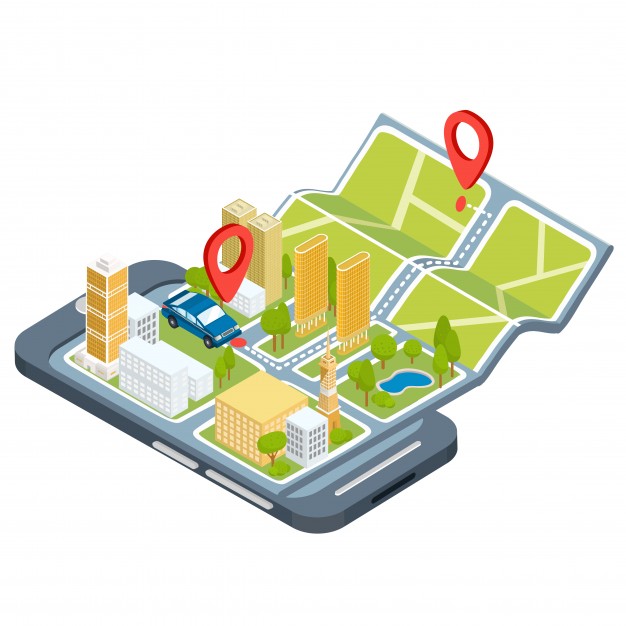While most location-based technology uses physical addresses to identify locations, Addressable Geofencing takes this to a whole new level by considering individual properties within a location. This is made possible by the smart use of public data like property tax records.
The benefit of this becomes apparent when targeting multi-home properties like apartments or buildings because you can target individual homes with immense precision. Whether it is an office floor, single-family home, or multi-home property, Addressable Geofencing provides superior targeting.
- Improve Customer Experience and Loyalty
Often, it is difficult for businesses and brands to reach customers who bring business to their physical stores, pay with cash, and leave without any digital impression. You can use Addressable Geofencing at your business locations to show your appreciation to these walk-in customers for choosing you.
Instead of promotional content, you can provide relevant informational content or simply send a thank you for choosing your business. This enhances the customer experience and creates a positive impression of your brand, encouraging loyalty.
Addressable Geofencing allows you to scale your digital marketing efforts immensely. Since you can reach up to a million addresses simultaneously, you can reach extremely large audiences, giving you immense targeting potential, brand awareness, and conversions.
- Cover Multiple Demographic Aspects
Although it is covered extensively, location is not the only factor you can use for Addressable Geofencing. The campaigns using this tech can target audiences using other demographic points.
Everything from age, gender, income, interests, education, etc., can be used to target audiences within our Geofence. You can further focus your marketing efforts where your market research suggests you'll get the most conversions. Professional marketers always incorporate multiple demographics for comprehensive Addressable Geofencing marketing campaigns.
- Use Conversion Zones (for Measurements)
You can turn your business locations into conversion zones through Addressable Geofencing. Let's say you have a physical store where customers come to make purchases. Using it as a conversion zone will allow you to measure your campaigns.
When prospects enter your physical store after receiving an ad from your marketing campaigns, you can mark it as a success or "conversion" for that campaign because they landed at your physical store after getting that ad you ran.
This is a great way to connect your offline conversions to online digital marketing campaigns, which is typically difficult without Addressable Geofencing. It is beneficial for businesses that rely heavily on physical stores for conversions.
- Omni-Channel Connectivity
Addressable Geofencing offers you the ability to connect to your prospects and customers through multiple channels. Whether it's audio ads, video ads, TV campaigns, or social media ads, you can engage them through all channels. If they are in your Geofenced area, you can reach them anywhere.
This omnichannel approach also provides market testing opportunities. Your marketing messages can reach specific audiences to get their responses. This reveals which channels work better with which prospect, allowing you to engage them through relevant marketing campaigns on preferred channels accordingly.
How to Use Addressable Geofencing
Despite being seemingly complex, using address Geofencing for your business is quite easy. Three basic steps can help you launch your Addressable Geofencing marketing campaign.
- Create Your List of Addresses
Naturally, the first thing you need is to gather all the physical locations or addresses you want to target. This can include your business locations, storefronts, customers' addresses, competitors' business locations, or the addresses of the leads and prospects you want to target.
As with any targeted marketing campaign, you need to consider who your target audience is for your marketing campaign. You wouldn't want to run the same marketing campaign for existing customers as you would for fresh prospects.
Gather as much information as you can regarding your target audiences because it will help you create hyper-personalized ads or campaigns.
- Create Your Personalized Advertisement or Campaign
This is like any other advertisement or marketing campaign you create, with the exception of being hyper-personalized. Since Addressable Geofencing allows you to have pinpoint accuracy, the message of your ad or campaign should directly speak to the pain points and requirements of your target audience.
For example, car dealerships have many customer details, including their addresses. This means they can target individual customers who are nearing the end of their lease agreement. It gives the dealership the perfect opportunity to market new car deals or lease agreements to these customers.
They can hyper-personalize their marketing campaign to meet customers' needs at the end of their lease agreements, as these are the people who are most likely looking for a new car.
- Track and Manage Your Marketing Campaign
It is always a great idea to set goals for any marketing campaign, and this one is no different. Tracking key statistics from your campaigns will help you learn about the things that work and what doesn't, allowing you to improve your marketing campaigns over time.
Metrics and key performance indicators can reveal how frequently your target audience interacts with your Addressable Geofencing marketing campaign. This can tell you which addresses are converting and which ones are not producing desirable results.
The more you learn about your campaign, the more you can improve it and use what you've learned in future campaigns.
How Is Addressable Geofencing Being Used?
Addressable Geofencing is mostly used to try and engage existing customers and build brand awareness. Here are just a few examples of how it is used in various industries.
Realtors trying to advertise and sell a local listing from their portfolio can use Addressable Geofencing and add the address of their listing. Any leads who visit the home for a showing or open house can then be targeted through personalized campaigns and also receive updates on the status, price change, and other aspects of the listing.
Realtors can also market similar homes to these leads once the original listing is sold. This allows them to engage leads and build interest in other listings on their portfolio.
As mentioned previously, car dealerships can target audiences nearing the end of their lease and market new cars and lease agreements. Similarly, they can use Addressable Geofencing to capture leads in nearby neighborhoods.
Moreover, they can target certain homes or neighborhoods based on demographic information and market upcoming sales and promotions. Customers and leads in higher income brackets or neighborhoods can be offered new luxury models. In contrast, companies can market models, financing options, or upcoming sales to those in lower-income brackets or neighborhoods.
Prospects living in areas with more rugged roads can be targeted with ads for 4x4 trucks, whereas companies can target city dwellers with ads for fuel-efficient cars.
- Pharmaceutical and Healthcare
Gender, age, and other household information can be used to segment and target specific people. Younger families can be marketed with medical products for babies, whereas businesses can target older households with age-related medical products and services.
Businesses in the banking or finance industry can use neighborhood income information to target higher-income households with wealth management or financial planning. Similarly, areas with lower incomes households can be targeted with credit programs, lending services, or debt consolidation.
Of course, these are just a few examples, and businesses in nearly every industry can use Addressable Geofencing in highly effective ways.





